This post may contain affiliate links. For more information, read my disclosure policy.
This All Butter Pie Crust is my absolute favorite pie crust recipe. It works EVERY time and produces flaky, buttery homemade pie crust that will make your pie recipe perfect!
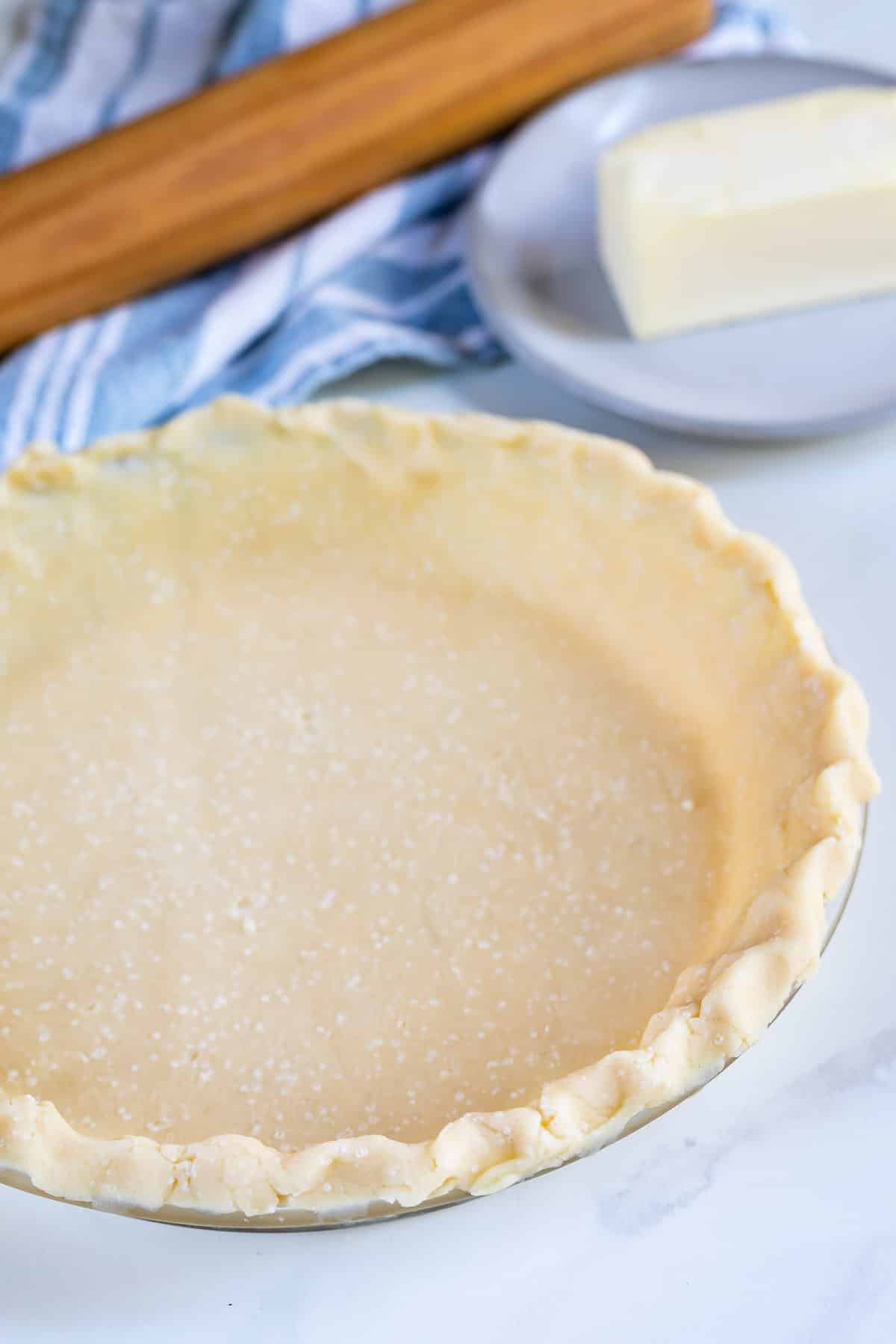
The BEST Pie Crust Recipe
I’ve been using this all-butter pie crust recipe for over 10 years. I always try other recipes but I come back to this one because it’s so easy and so good.
To make a good pie crust you need just 4 ingredients: fat, water, flour, and salt. You can use a few different kinds of fats for pie crust, the most popular being butter, shortening (Crisco), or lard. I’m going to go against the grain and tell you, my crust is all butter. I love butter and I find that the taste of an all butter pie crust is so much better than any other recipe.
My all butter pie crust recipe is quick, fast, easy and delicious! It’s the perfect vehicle for ALL your pie recipe needs.
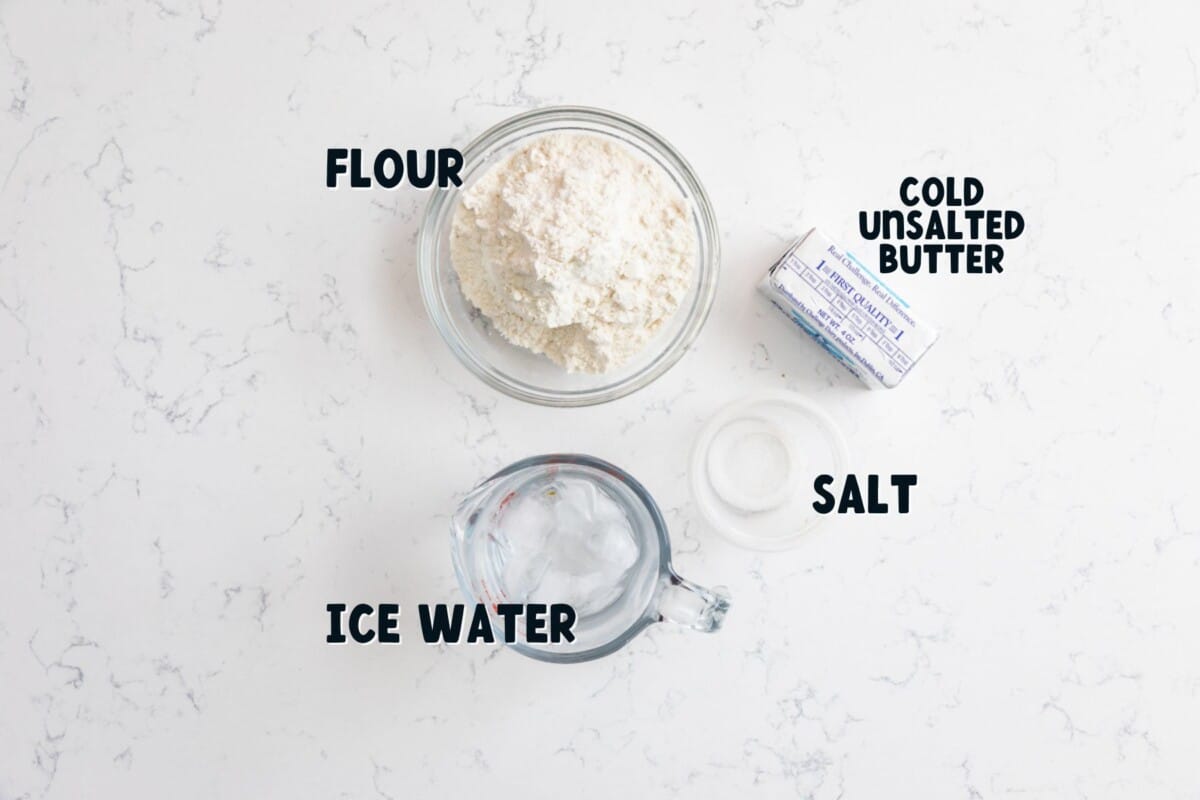
4 Ingredients Needed
A pie crust recipe with butter is such an easy pie crust to make. There are two ways I make this crust: in a food processor or by hand. You can do either one! This really is a no fail pie crust made with butter!
- Flour – plain all-purpose flour is best
- Salt – A little bit of salt helps add flavor to the pie crust.
- Butter – make sure your unsalted butter is COLD
- Water – make sure to use ICE WATER
This crust makes one 9-inch pie crust. If you want to make a double crust pie, just double the recipe.
Pie Crust Secret Tips
- All ingredients MUST be COLD when you make pie crust. Use cold butter (dice it then chill it again) and ice water. I always fill my measuring cup with ice and water to keep it super icy and cold.
- Use a food processor for a no fail pie crust! This comes out perfect EVERY TIME!
- Roll the pie crust BEFORE you chill it – this is a game changer.
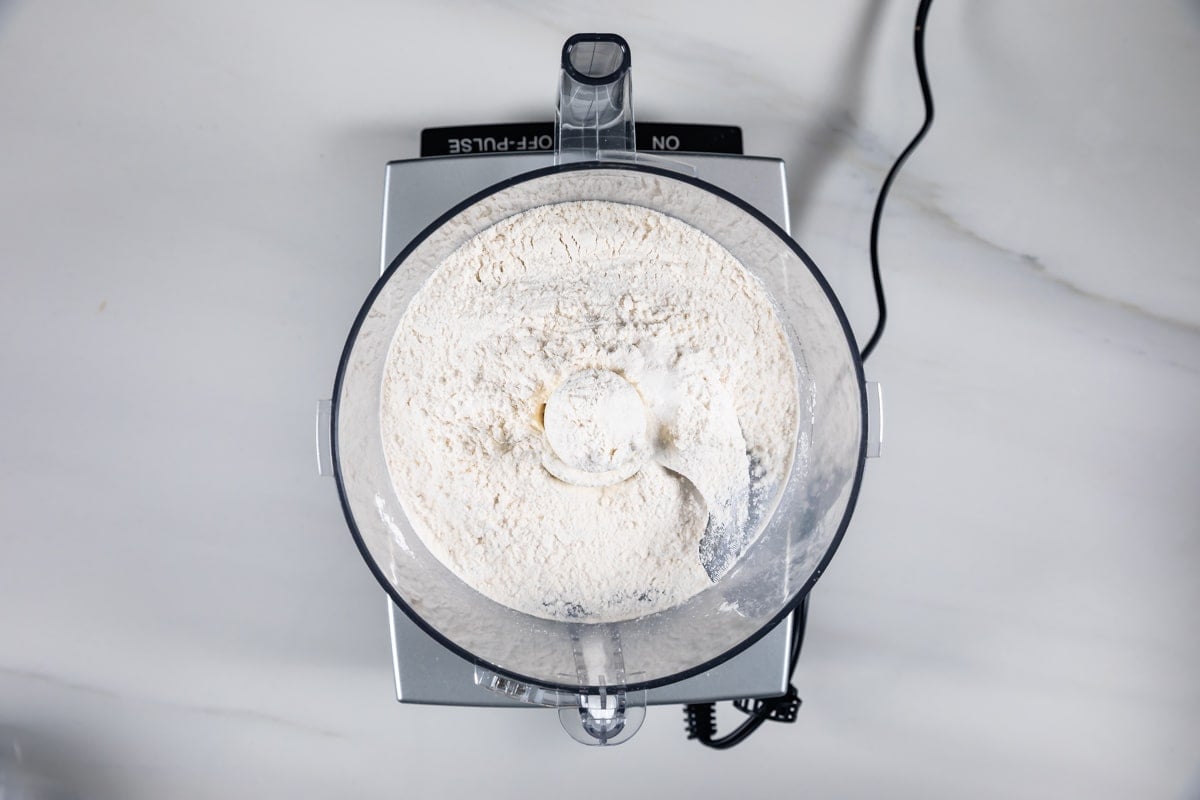
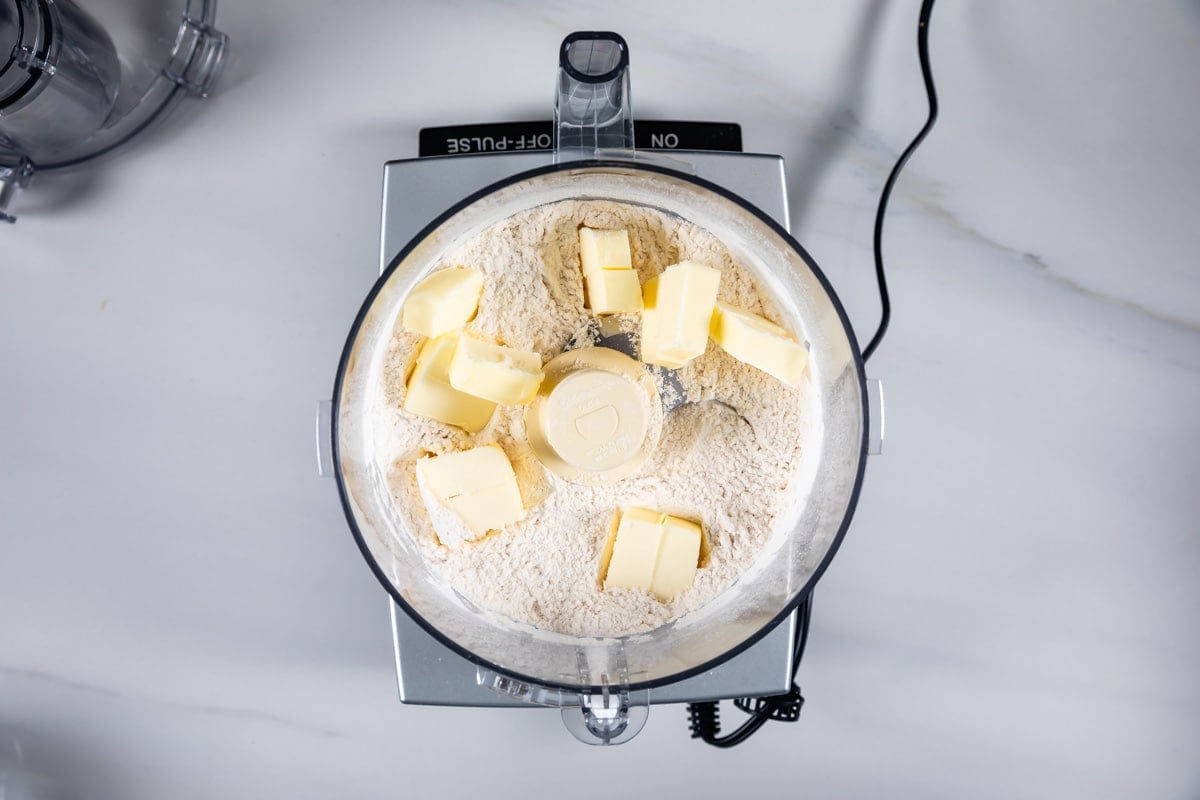
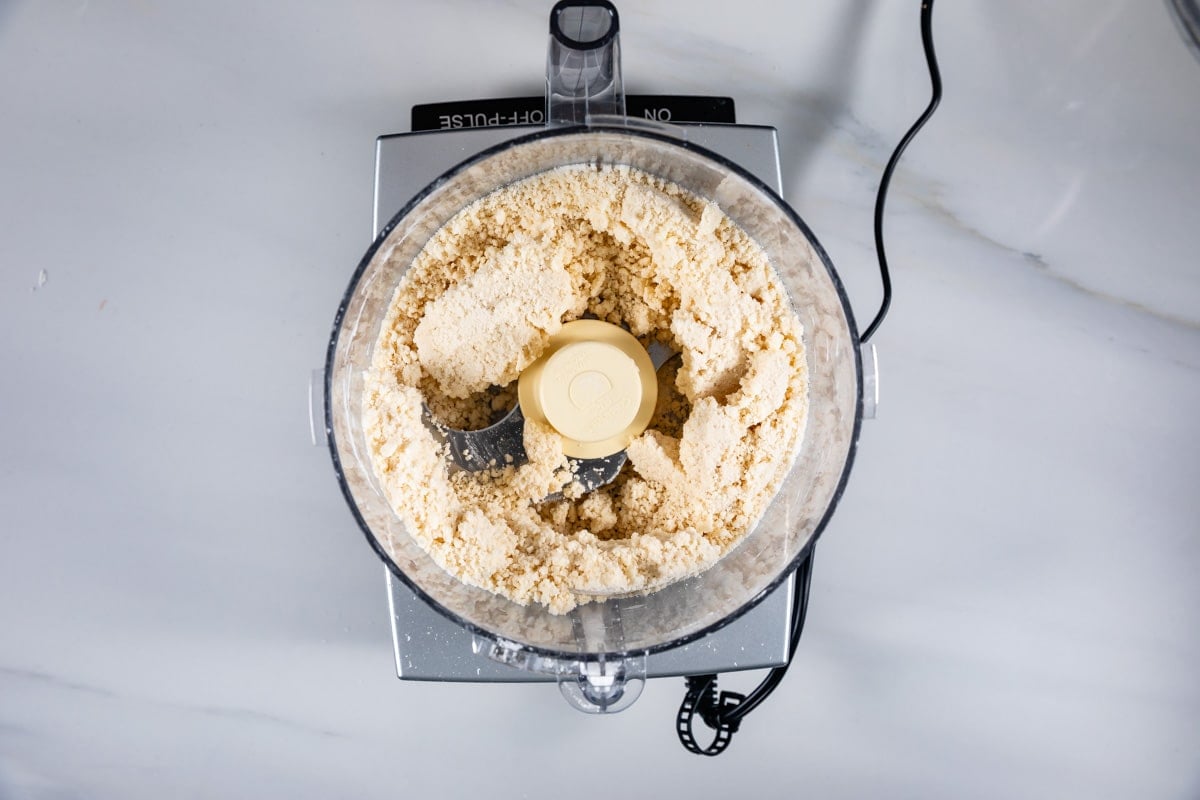
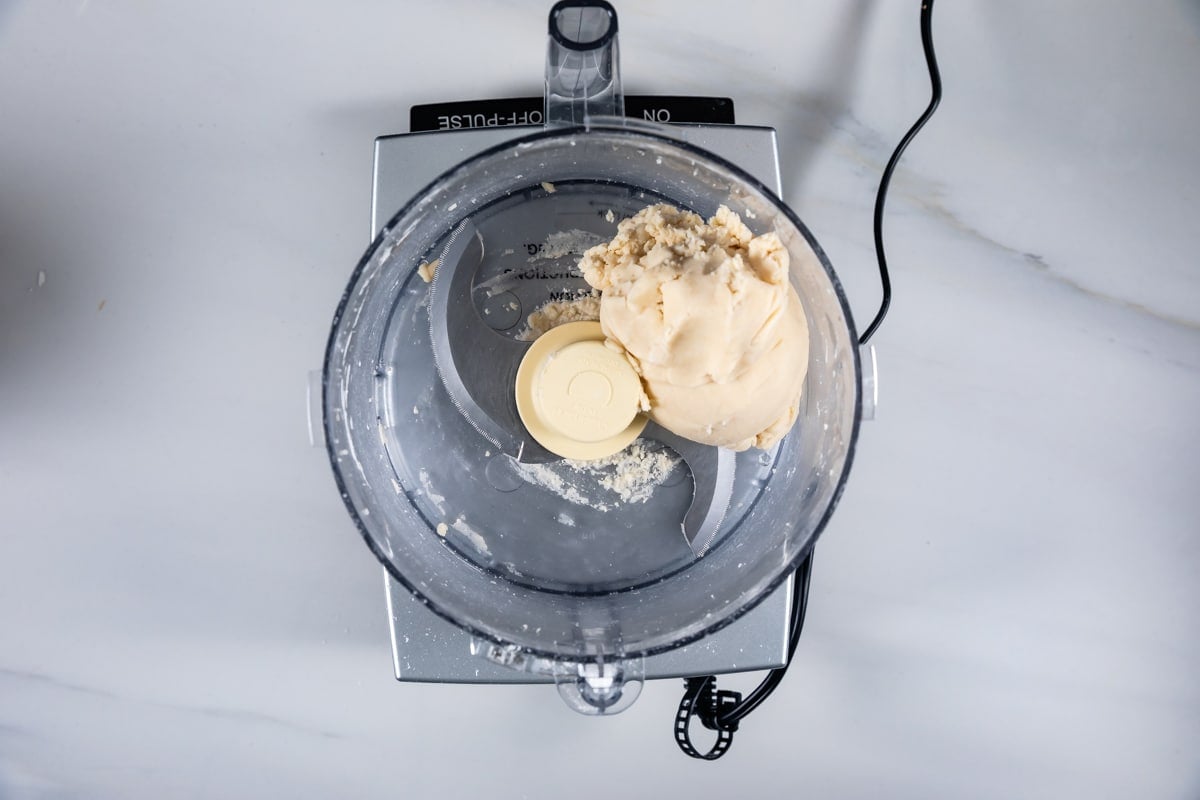
How to make Pie Crust in a food processor
- Add your all purpose flour and salt to your food processor. Pulse once or twice to combine.
- Add your butter. It’s COLD, straight from the fridge. Don’t touch it too much. Don’t go answer the phone. Cold, straight from the fridge to the food processor! Pulse a couple of times.
- Add your ICE water. Not the ice, just the cold water. Start with 1 tablespoon.
- Pulse a few times, let it run a few seconds. I always add a second tablespoon of water at that point, always. But, depending on altitude and humidity and your kitchen and the star alignment, you might need more.
- Wait to see if it comes together before adding more than 2 tablespoons of water. You do not want a wet dough. It takes a few seconds for it to turn into the ball of all butter pie crust!
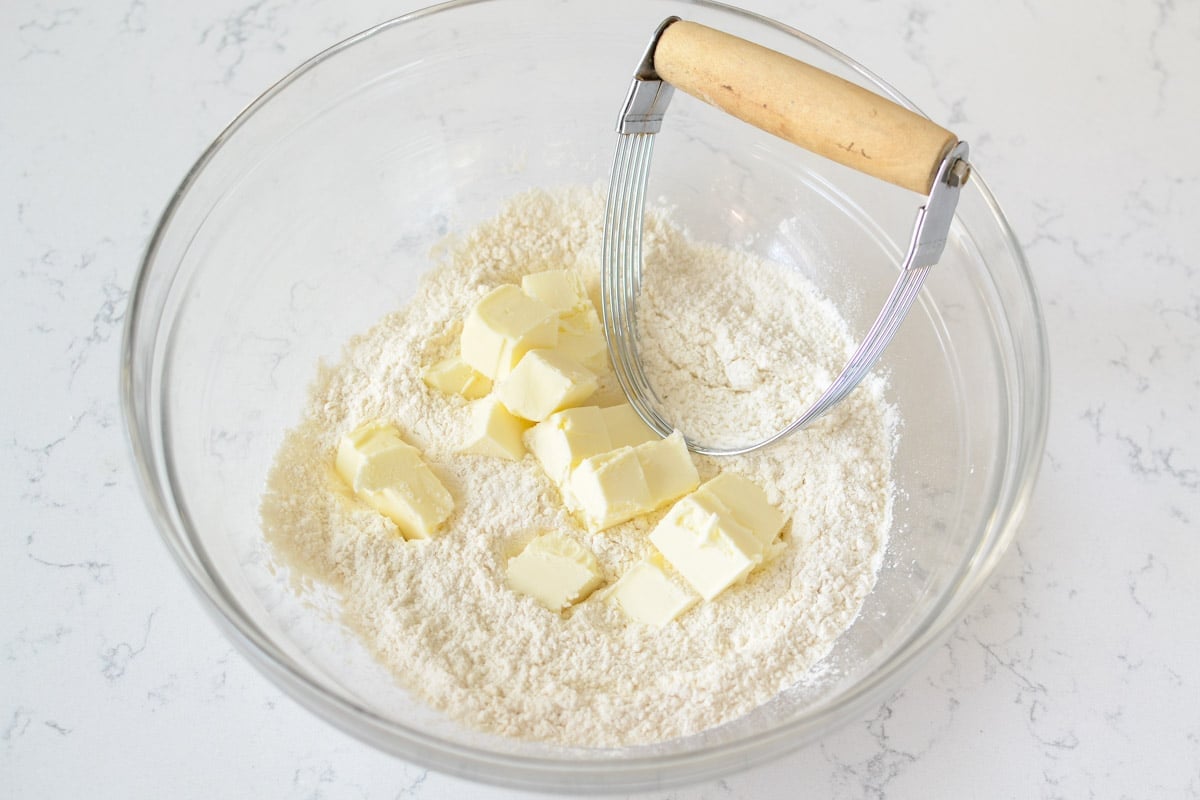
How to make pie crust by hand
- If you don’t have a food processor, you can do this by hand with a pastry cutter. Just whisk the flour and salt first. Then cut in the butter with your pastry cutter until you can’t anymore (this is called a shaggy dough).
- Turn the dough out onto a lightly floured surface and press it together until it forms a disk. Try not to work it too much – just enough so it comes together.
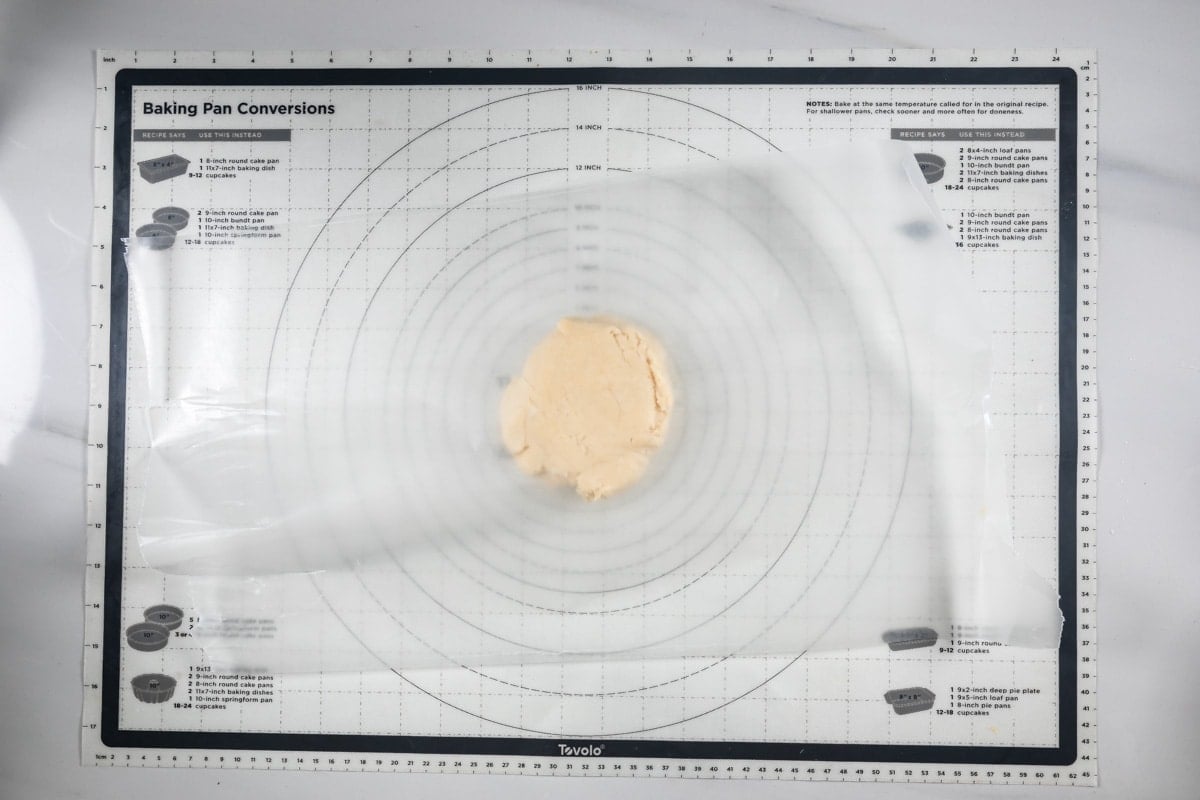
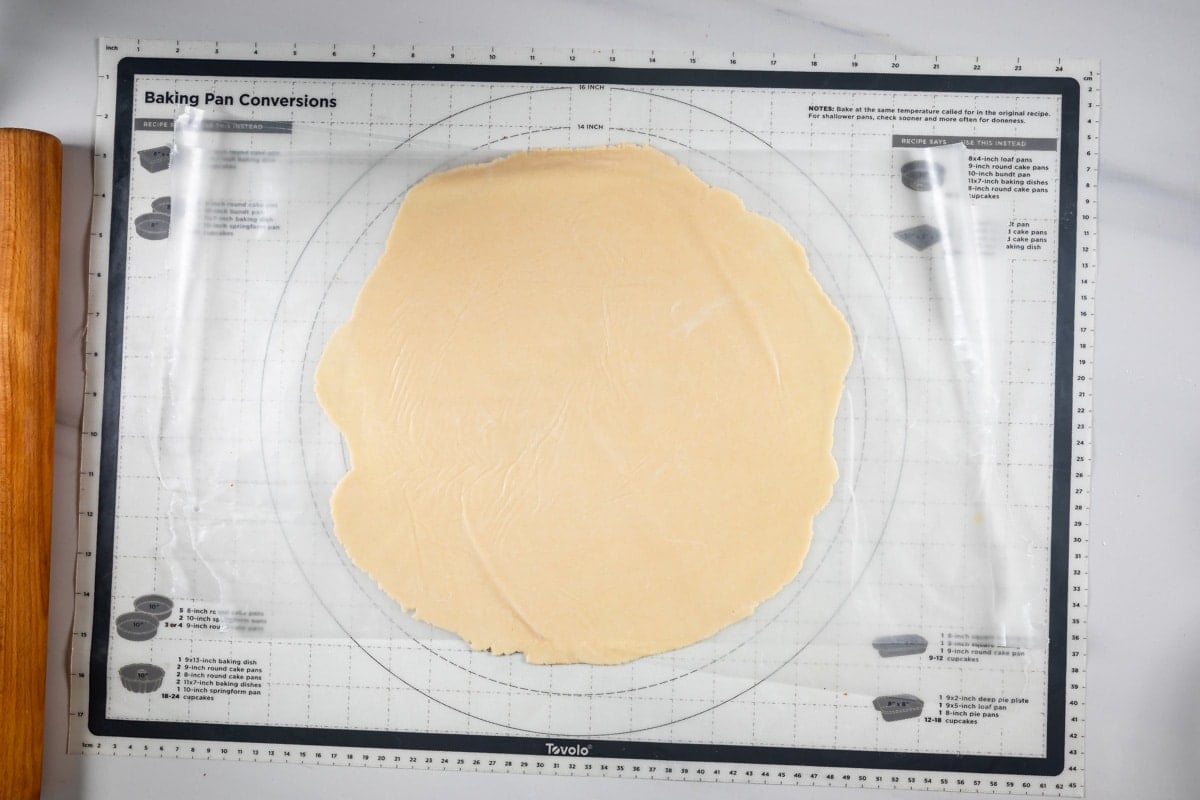
How to roll out pie crust
I roll out my pie crust before I chill it. This is unconventional but it works and makes your life so much easier! Roll it between two sheets of wax paper so it won’t stick to your surface or rolling pin. By not adding more flour you reduce the toughness of the crust.
- Place the dough between two sheets of wax paper or parchment paper. Roll to 1/8-inch to 1/4-inch thick.
- I like to pick mine up and flip it over and around every few rolls until it gets too big to do that. This is important because that way you know it’s not sticking to your surface. There is nothing worse than rolling out the perfect dough and have it crack and break when you go to pick it up.
- The easiest way to transfer your all butter pie crust to your pie plate is to roll it up on the rolling pin. If you’ve moved your crust around a bit, it should roll up no problem.
Important Notes
Pie Plate Size: This crust fits best in a 9-inch pie plate (not deep dish). Not all pie plates are the same size. This crust will fit a smaller pie plate but not a larger one.
Use a pie crust shield to keep your edges from burning. If you don’t have a pie crust shield, you can use strips of foil. I add these before baking and remove them about 10-15 minutes before the pie is done baking.
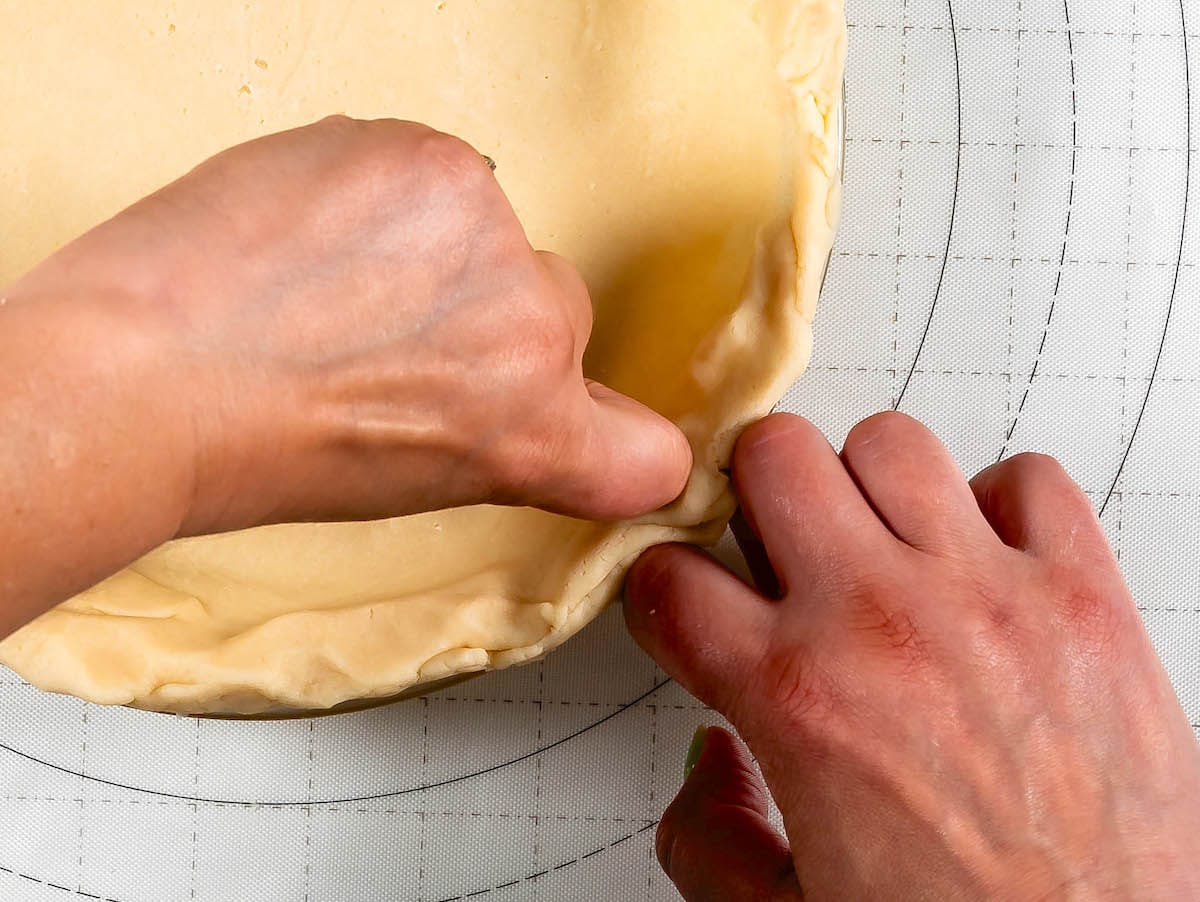
How to crimp the edges
- Use your knuckles to crimp the edges.
- You can also skip the finger step and use the tines of a fork to crimp the edges.
- Make it decorative: Another way I like to dress up my pie edge is to make a second all butter pie crust and use small cookie cutters to cut shapes and put them around the edges.
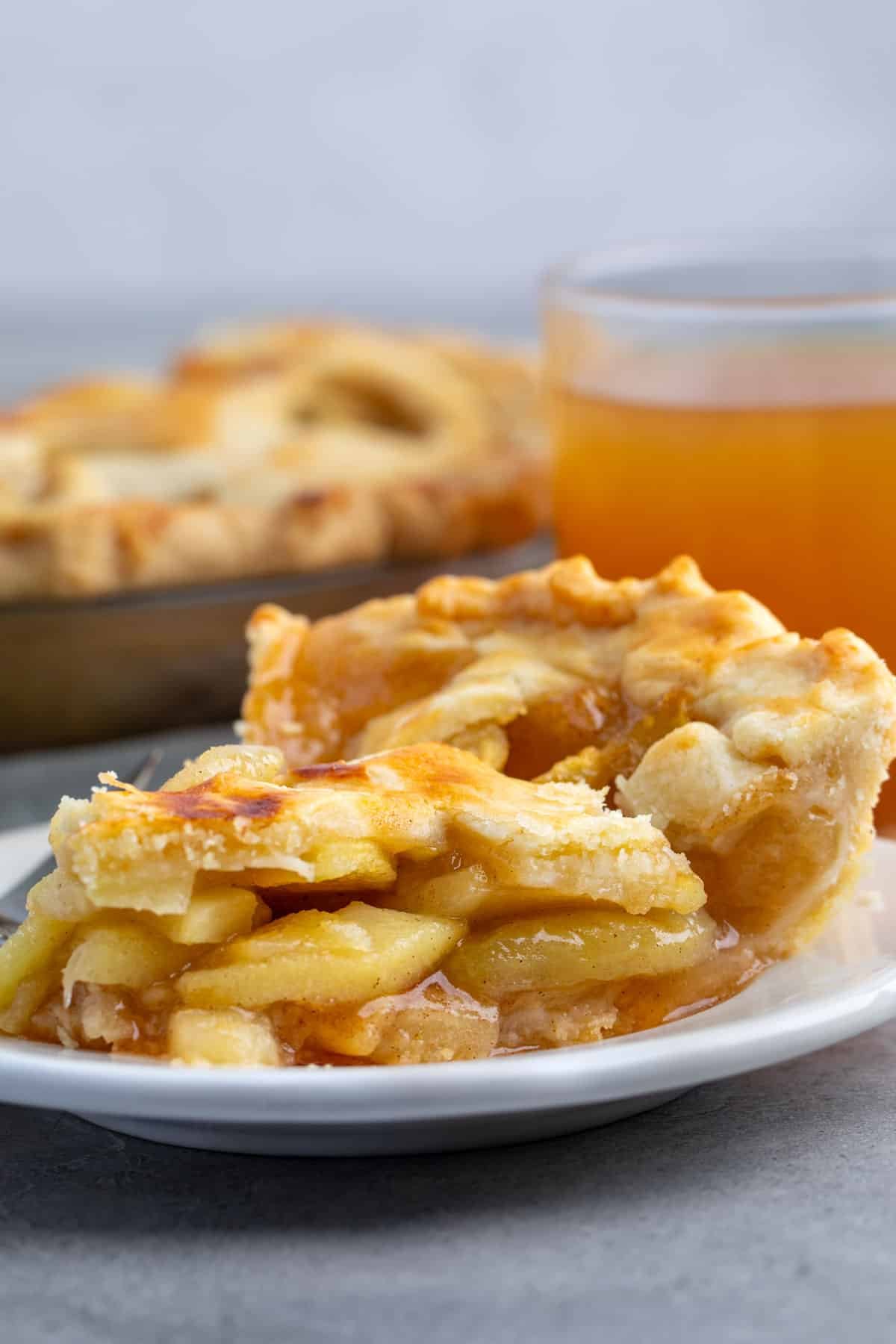
Expert Tips
Cube your butter: while you’re assembling your ingredients, cube your butter and put it back into the refrigerator to chill at least 5 minutes. Starting with cubed butter makes it easier for the processor to work it into the dough.
Chill the crust before baking: regardless of whether you’re pre-baking the crust or making a filled and baked pie, chill the crust at least 30 minutes before baking – or even freeze it. Baking it COLD is the key.
Thickness: roll the crust to about 1/4-inch thick. If it fits in a 9-inch pie plate with just a bit of overhang, it’s the correct thickness.
Roll on a lightly floured surface if you’re not rolling between sheets of wax or parchment paper.
Only add 1 tablespoon of water at a time – it’s easy to add more but you can’t take it out once it’s in!
I like baking in glass pie plates – I find them the best at getting the bottom done and the best for slicing.
Have leftover crust? Make Pie Crust Cookies!
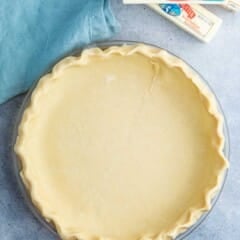
My Favorite Easy Pie Crust Recipe
Recipe Video
Ingredients
- ½ cup (113g) unsalted butter diced and chilled
- 1 ¼ cups (155g) all-purpose flour
- ½ teaspoon salt
- 2-4 tablespoons ice water (I always use 2 tablespoons)
Instructions
- Make sure your butter is diced and cold before starting. Make sure you’re using ice water also.
Using a food processor:
- Combine flour and salt in food processor. Pulse once to mix.
- Add butter and process until it resembles coarse crumbs. Add 1 tablespoon of water and pulse, a few times. I always add a second tablespoon of water and pulse until the dough forms a ball. This takes a few seconds. If you find your mixture is too dry, you can add another tablespoon of water, one teaspoon at a time.
- Turn the dough out onto a silicone baking mat, if you have one. If you don’t, you’ll need to flour your surface. Press the dough ball into a disk and roll to about 1/4″ thickness. If it sticks to the rolling pin, place a sheet of wax paper on top of the dough so you don’t have to add more flour. Be sure to flip and rotate your dough as you go so it does not stick to your surface. Roll out the dough to a few inches larger than your pie plate (about 12″ for a 9″ pie plate).
- Place in pie plate and press to fit. Tuck under any overhang and crimp or use the tines of a fork to decorate the edges. Chill until ready to fill.
By Hand:
- Add flour, butter, and salt to a large bowl. Cut your butter in using a pastry cutter. Work in one tablespoon of water at a time. I find I need to use 2-3 tablespoons of water when I’m doing this by hand.
- Turn the dough out onto a silicone baking mat, if you have one. If you don’t, you’ll need to flour your surface. Press the dough ball into a disk and roll to about 1/4″ thickness. If it sticks to the rolling pin, place a sheet of wax paper on top of the dough so you don’t have to add more flour. Be sure to flip and rotate your dough as you go so it does not stick to your surface. Roll out the dough to a few inches larger than your pie plate (about 12″ for a 9″ pie plate).
- Place in pie plate and press to fit. Tuck under any overhang and crimp or use the tines of a fork to decorate the edges. Chill until ready to fill.
- This pie crust is great for filling and the recipe makes 1 crust that fits comfortably in a 9″ pie plate. For a bigger pie plate or for a double crust, double the recipe.
- Make sure to chill the pie crust at least 30 minutes before filling or baking. If you’re blind baking the crust, chill at least 2 hours or freeze 30 minutes.
- The crust can be wrapped well with plastic wrap and stored in the refrigerator up to 2 days or frozen for up to one month before baking.
Baking instructions
- For Blind Baking: follow the link in the notes below for detailed instructions. Prick the bottom of the pie crust with a fork. Layer a sheet of parchment paper in the bottom and up the sides of the crust. Fill the crust with pie weights (or dry beans/rice/etc) and bake at 400°F for about 15-20 minutes. Remove the parchment and pie weights carefully, then continue baking until cooked through and golden brown.
- For filled pies: bake as directed in the recipe you're using.
Recipe Notes
Recipe Nutrition
FAQ
I think an all butter pie crust tastes better than one made with shortening or lard. Butter has so much flavor, plus produces a tender crust.
Yes – wrap it well in plastic wrap and place it in an airtight container or bag to freeze. You can also put it in your pie plate and wrap that well and freeze – either baked or raw.
No, there is enough butter in this you do not need to grease your pie plate.
Yes – if you use salted butter reduce the amount of salt in the recipe to 1/4 teaspoon.
Yes easily – just double everything but use 2 tablespoons water to start. You may only need 2-3 tablespoons water for the dough to come together. Doubling the recipe is perfect for a 2-crust pie.
This depends on the recipe you’re using. Be sure and make the crust according to this recipe but then follow the baking instructions on the recipe you’re using!
How to use this pie crust
- If you love custard pies, try my buttermilk pie recipe.
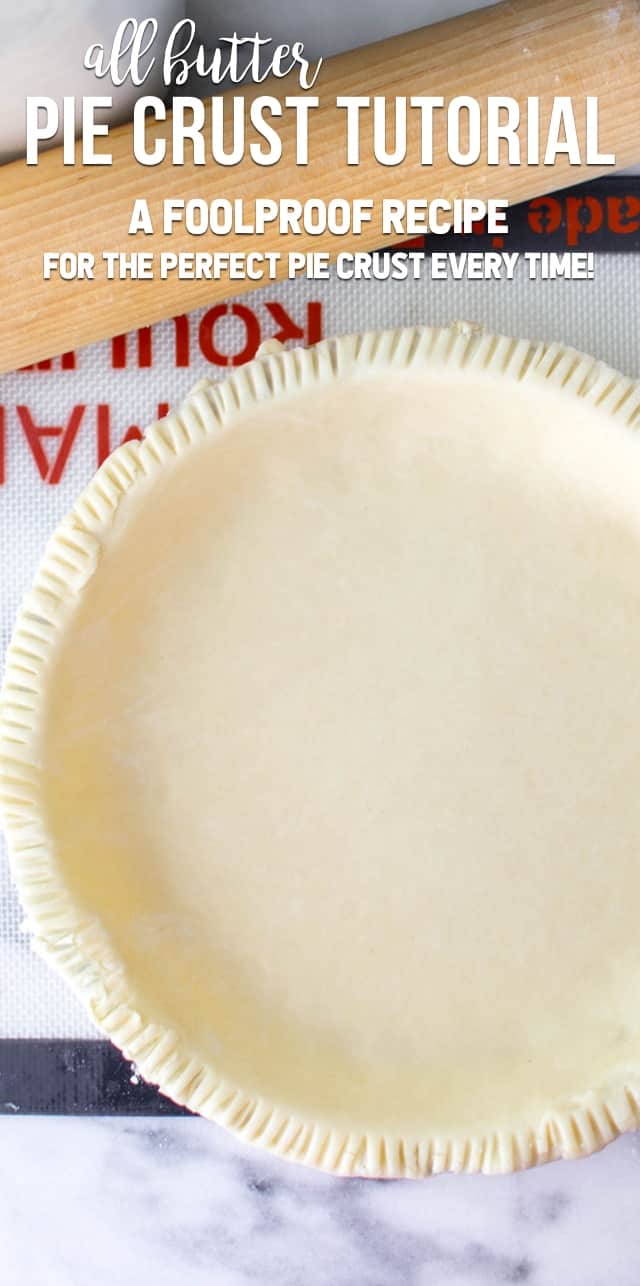
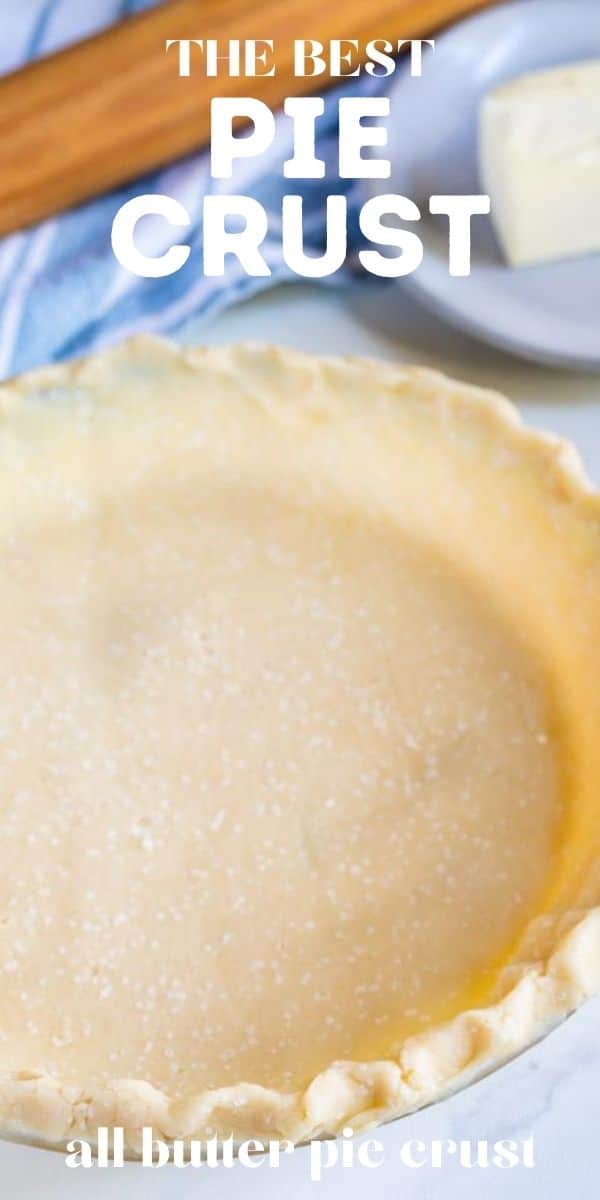
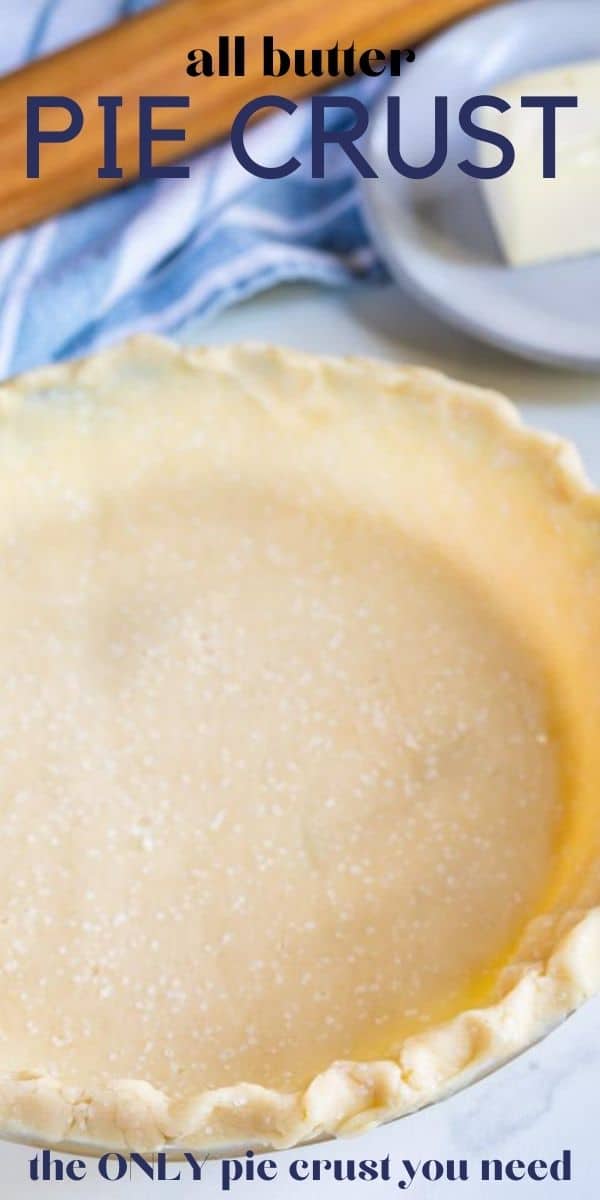
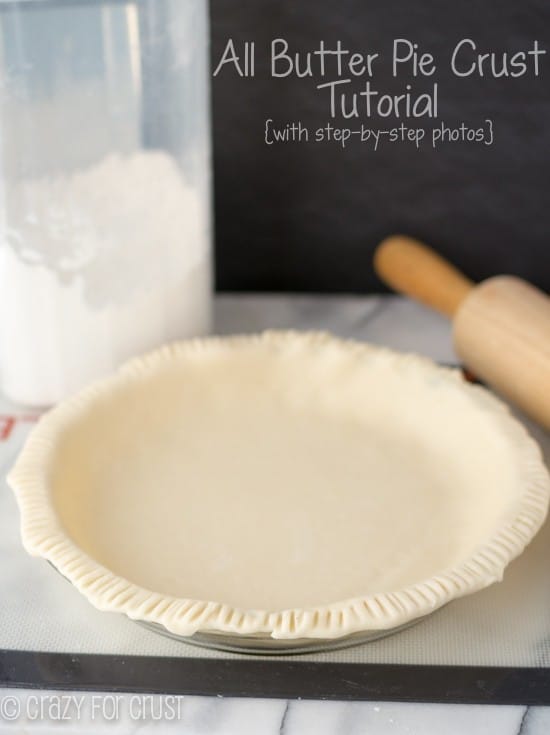
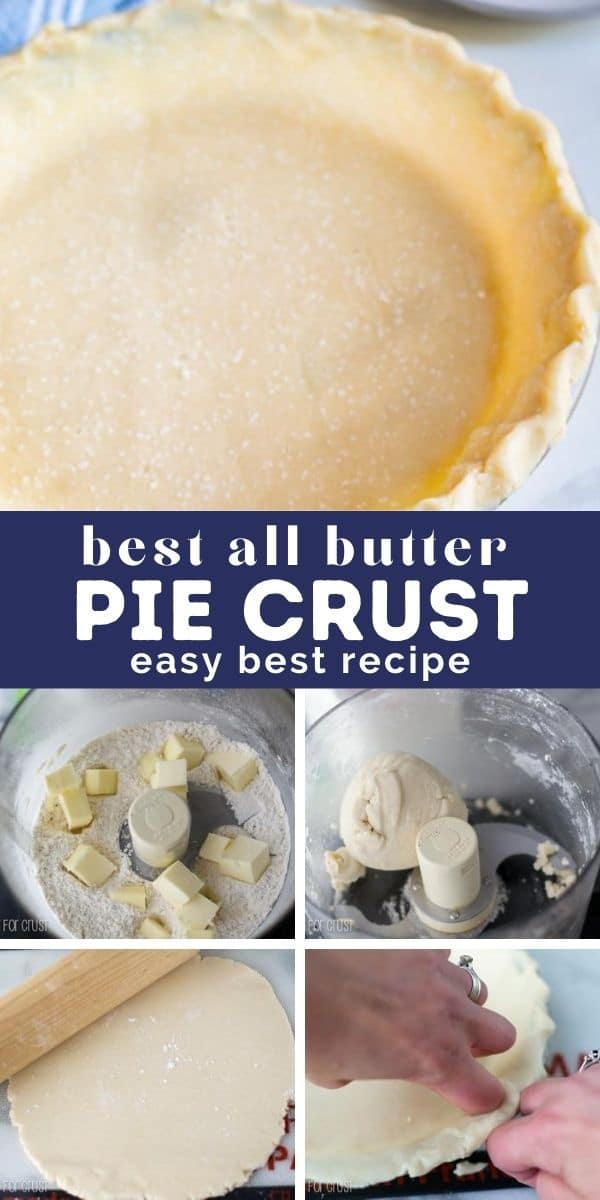
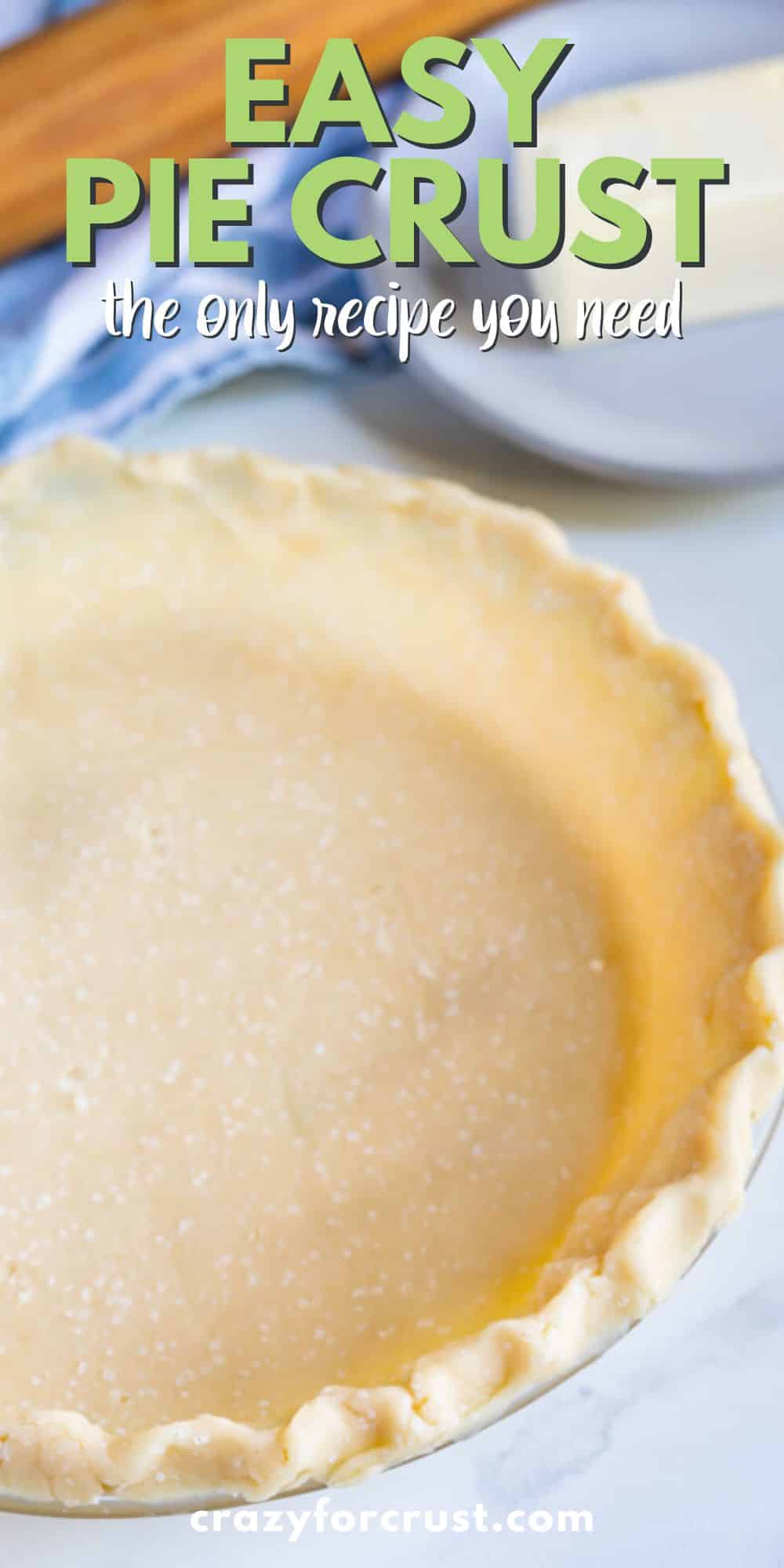
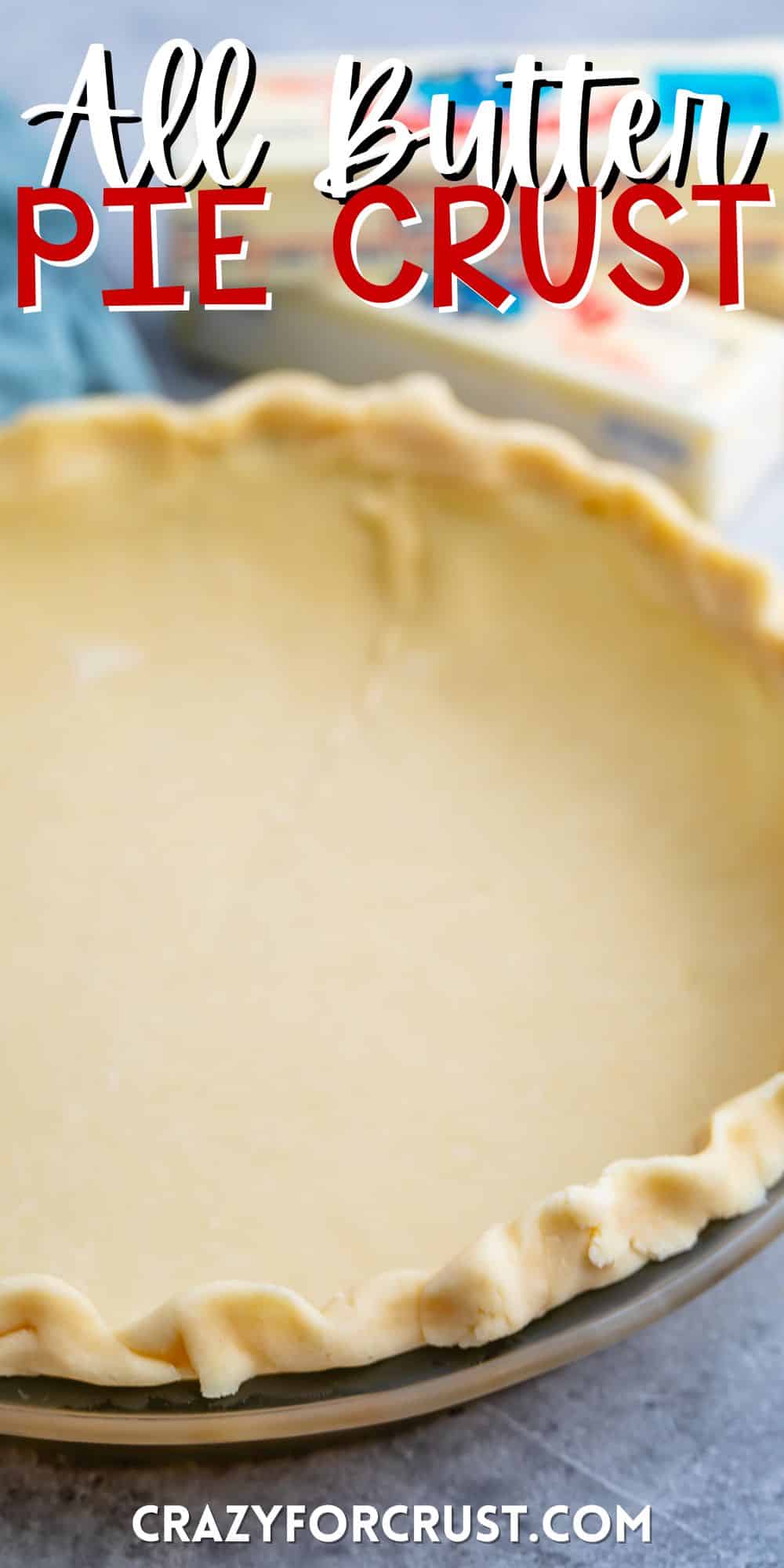

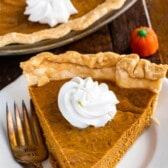
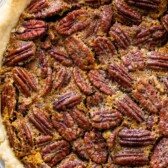
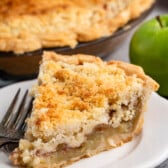
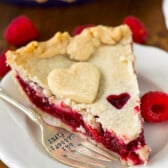
i am going to try your butter crust now, but I was wondering if you ever tried substituting white or apple cider vinegar for the water? I have heard about this alot recently… Supposedly, using vinegar makes the crust flakier, and more tender.
I have used vinegar before, but not in awhile. I think if you use 1 tablespoon vinegar and 1 water it should work just fine!
i will try adding vinegar another time! I’ve also heard of using alcohol, since the alcohol evaporates… I don’t like to experiment for guests, especially for holidays, lol, but I just made your butter crust and it turned out perfect!! I’m a fan! I made regular pumpkin pies, but will try your frozen pumpkin meringue recipe in the near future!
Hi Dorothy,
I recently saw this post and am looking forward to making this crust, particularly because it does not use shortening. I would like to use it for a pecan pie, but I have a few questions. 1: For pecan pie, do I still need to poke holes in the crust before adding the filling? 2: Some pecan pie recipes state to partially pre-bake the crust before adding the filling. Would that be necessary with this crust for a pecan pie? Thank you!
Hi Janelle! I make this crust with pecan pie all the time, so it will definitely work. As for poking holes in it, I guess it depends on the recipe you’re using. My pecan pie recipe doesn’t pre-bake the crust, it cooks it at a higher temp (450) for 10 minutes, then lowers it to 350 for the rest of the baking. This crust recipe is multipurpose, so you can use it with any recipe. You shouldn’t need to prebake the crust (this is from joy of baking: “Some recipes do call for pre-baking the crust and you can do that, but I find this step can be eliminated if you simply bake the pie in the lower third of the oven. You will, however, need to watch for over browning on the edges of the crust, and if this starts to happen, just cover the edges with foil.”)
Just made this pie crust (my fist time ever making any pie crust) and it turned out fabulous!!
I’m so glad you enjoyed it!!
Am new to making crusts and am intrigued by this recipe. One question though – I want to make an apple pie so need two crusts. For the top one, does it still need to be chilled? Could I just put it rolled out, on pizza pan, stick it in the fridge then put it on top? Thanks so much for your help.
Yes, definitely chill it. Double the recipe, divide it in two, roll them both out as directed. Place one in the pie pan and the other just on a cookie sheet and chill until it’s really cold! Enjoy!
I have made a lot of crusts but your method is the best, the food processor is great for pie crusts and pierogi dough(for any one who is interested in pierogi)-Polish filled dumpling. I am in total agreement with all your opinions, especially using salted butter and rolling out the dough before it is chilled, I never had luck with chilled dough or beating it several times with a rolling pin, that never helped. I am 65 years young and bake a lot for a big family so I want to Thank You from the bottom of my heart for sharing your information.
I’m SO glad you like the method! It’s the easiest I’ve found, that’s for sure!
Featured In
Rate This Recipe
Recipe Ratings without Comment